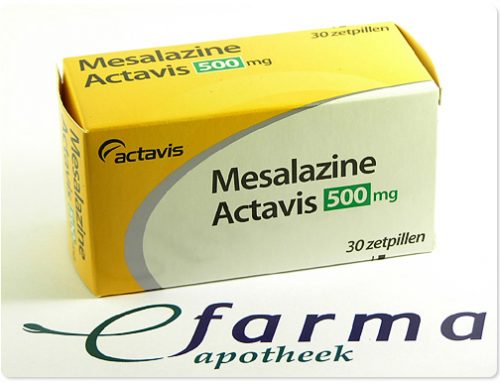شکم درد با علايم درد در ناحيه شکم مشخص مي شود. اين بيماري به دليل معده کوچک ، روده هاي بزرگ چين دار، ناتواني در عمل استفراغ در اسب زياد ديده مي شود.
معمولي ترين دلايل شکم درد، نامنظمي تغذيه، تغيير ناگهاني رژيم، استفاده از علوفه پژمرده و کهنه و يونجه کپک زده، تغذيه هنگام خستگي، کمبود آب، نجويدن کامل غذا، کار شديد بلافاصله پس از غذا و وجود انگل مي باشد.
به اين ترتيب مي توان گفت که مسوول بروز شکم درد اغلب پرستاران و مهتران و مالکان اسبها مي باشند و در صورتي که در مورد تغذيه حيوان مراقبت بيشتري به عمل آيد مي توان از ابتلا به شکم درد جلوگيري کرد.
شکم درد با درد ناحيه شکم آغاز مي شود و اسب با ناآرامي، سم کوبيدن، به پهلو نگاه کردن، خميازه کشيدن، دراز کشيدن، غلتيدن، پشت هم تغيير جا دادن و ناليدن، آنر نشان مي دهد.
در دل درد شديد اسب لگد مي زند و شديدا” به دور خود مي چرخد و حرکات غيرارادي مي کند، تنفس مشکل و بدن از عرق پوشيده مي شود.
در صورتيکه اسبي تمايل به راه رفتن داشت مي توان به آرامي حيوان را راه برد اما هرگز نبايد در چنين شرايطي اسب را به يورتمه و چهارنعل و غلتيدن وا داشت، اين حرکات ممکنست باعث پارگي روده شوند.
استفاده از حوله داغ و پتوي گرم جهت پيچيدن دور شکم و پهلوها ميزان درد را کاسته و عمل روده را تحريک و تسريع مي کند.
از خوراندن دارو به اسب يا معالجات ديگر بدون نظر دامپزشک بايستي پرهيز کرد، چه ممکن است خطرناک باشد.
پس از معالجه کامل حيوان بايستي مدت 24 تا 48 ساعت از خوراندن غذاي کامل به آن خودداري نمود، البته اين مدت بستگي به شدت و ضعف شکم درد دارد.
سبوس خيسانده گرم براي يکي دو وعده غذا پيشنهاد مي شود. به تدريج به مقدار غذا افزوده تا به اندازه جيره کامل روزانه برسد.
شکم دردهاي نفخي، انقباضي و انسداد روده بزرگ از اقسام شکم درد هستند، ضمن اينکه ورم روده و معده هم جزو بيماريهاي سوء هاضمه محسوب مي شوند.
Colic is the number medical cause of death in horses. Technically, colic refers to pain in a horse’s abdomen, although colic episodes typically reflect conditions of the horse’s colon. While colic can include a simple blockage, a spasm in the colon/gas buildup, or torsions in the digestive tract of a horse, the vast majority of colic episodes are idiopathic, or “of unknown origin.” In other words, we don’t know exactly what causes a horse to colic in most cases.
In reality, colic is often a direct result of diet, and is often preventable.
Some types of colic in horses include:
Idiopathic. No root cause determined. (over 80% of all colics)
Impaction. The result of an accumulation in a horse’s colon of sand, dirt, feed, or other indigestible material. This blockage makes if difficult or impossible for a horse to properly dispose of waste.
Gas (spasmodic). Excess fluid or gas, often caused by the over-fermentation of food in the hindgut, builds up in the digestive tract of a horse. The resulting pressure and possible inflammation along the gastrointestinal line causes discomfort for the horse.
Non-ideopathic. Cause is known.
Gastric rupture. Relatively rare, a rupture can occur when an impaction reaches the stomach or gas build-up causes the stomach to dilate.
Enteritis. Inflammation of the intestine, caused by many things, including infection, viruses, and bacteria.
Strangulation/torsion. One of the most lethal forms of equine colic. A twist in the colon or small intestine of a horse which may also cause the blood supply to be cut off, resulting in necrotic tissue.
Intussusception. Most often caused by tapeworms and other parasites, this is also a very dangerous form of colic whereby the intestine effectively slides like a telescope within a portion of itself. The blood supply can also be cut off, creating a blockage.
Feeding and Management Can Induce Colic in Horses
A horse’s natural diet is made up of grass, leaves, and bark, yet because of the performance demands put on today’s horses, they are often fed processed grains and sweet feeds that are high in carbohydrates. This can lead to hindgut acidosis, resulting in a lower pH in the colon and cecum. This means a higher level of acidity, which can modify the delicate microbial balance in the hindut and may compromise the mucosal lining of the colon. Eventually, colonic ulcers form, which may allow endotoxins to enter the blood stream, restricting blood flow to the colon and small intestine. Tissue may eventually die, resulting in food blockages and induced colic.
In truth, the exact sequence of events is unknown. But there is a significant amount of research that shows a connection between feeding horses grain rich in simple carbohydrates and conditions that can lead to colic. Veterinarians, register or login to the SUCCEED Veterinary Center to read more about this research.
Reduce the Risk for Horses to Colic
Colic is an epidemic in barns due to modern day practices in feeding and caring for horses, but induced cases of colic in horses may be avoided by preventing the root causes. A few measures you can take include:
Feed smaller but more frequent meals allow starches to digest before reaching the equine hindgut, preventing hindgut acidosis.
Increase turnout, reduce feed concentrates and add more quality forage
Slow food intake by adding chaff (chopped hay) to meals to help reduce your horse’s risk for colic.
While all these more natural equine management techniques may not be practical due to constraints of time and resources, any improvement to your feed system can help your horse perform at its best.
For more information on types of colic, how colic is induced, recognizing early signs, and feeding and management tips for reducing colic risk, visit the Crusade Against Equine Colic.
– See more at: http://www.succeed-equine.com/equine-health/health-risks/colic-in-horses/#sthash.9bM89pQi.dpuf



